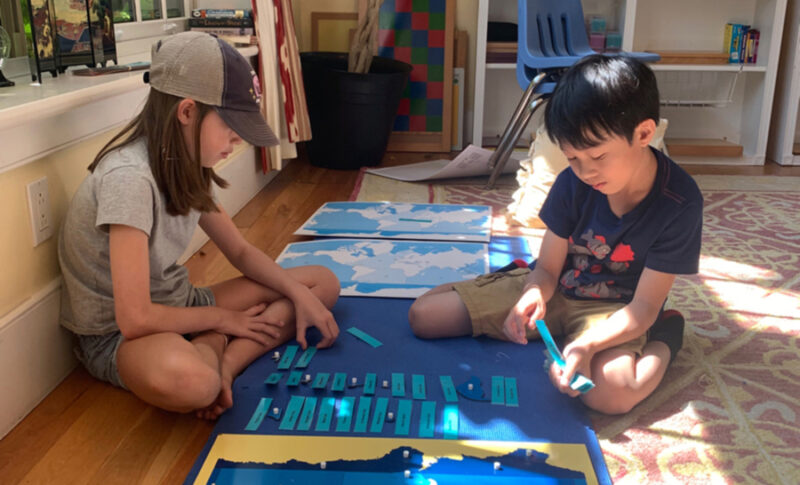Elementary I & Elementary II
Elementary Curriculum (6 to 12 years)
Multi-age groupings of children ages 6 – 9 and 9 –12 (or 6 –12) provide a heterogeneous mix in which children can collaborate and socialize. These inter-age relationships strengthen the entire community.
Older children are seen as role models within the community. They support the growth and development of younger children through socialization, assisting with new work, or teaching skills they have mastered themselves. They can also work with younger students in areas of the curriculum in which they themselves may need more practice, without stigma.
Younger children follow the example set by the older students, and have peers to work with in areas of the curriculum in which they may be more advanced. This multi-age community provides opportunities for all individuals to learn from each other, at times leading, sharing, or serving as role models. It also develops an appreciation of differences.
Within this supportive, inclusive community, children work through the curriculum at their own pace, accelerating during some tasks or taking additional time with others.
It is the spirit of the child that can determine the course of human progress and lead it perhaps even to a higher form of civilization
Dr. Maria Montessori
Practical Life
The practical life activities are focused around care of self, care of environment, grace and courtesy, and movement. These activities help the child to develop particular lifelong skills (zipping or tying, pouring or cutting, greeting a visitor). The children cultivate their eye- hand dexterity and coordination through use of pouring, spooning and polishing materials as well as developing physical independence when carrying out everyday tasks. Exercises which foster courtesy, such as preparing and serving snacks, help children begin to develop a sense of belonging to an interdependent community.
Sensorial Learning
The sensorial curriculum focuses upon work of the hand and mind. Through exercises of comparison, discrimination and observation designed to refine the sense, children develop their foundation for later abstract learning. Coordination skills, concentration and judgment are fostered as children manipulate the colorful, attractive sensorial apparatus.

Language Arts
Language is an integral component of the entire Montessori curriculum, because all thoughts, ideas and concepts can only be understood and clarified through oral or written communication. As such, language is always presented in a context or body of information, rather than studied in isolation of other material. The children will learn the symbols for each sound and then begin to make simple phonetic words using the Moveable alphabet, which is a set of precut letters. Through these exercise, children discover that they can read.

Mathematics
The mathematics curriculum is based upon the importance of comprehension through manipulation and sensorial learning. Understanding of number value and symbol, fundamental operations and mathematical number facts are achieved through exploration of concrete materials that are designed to illustrate mathematical principles. Learning in this way promotes feelings of confidence and success and ultimately the development of a mathematical mind.

Science and Culture
In the cultural area, materials focusing upon topics related to biology, history, geography, art, music and movement are presented to stimulate the appreciation and natural curiosity possessed by children about the world which surrounds them. Creativity is fostered through a variety of activities related to the expressive arts.
